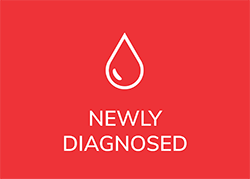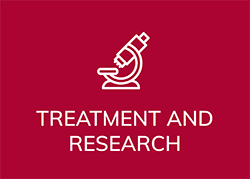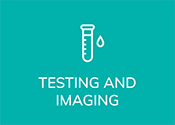Over the course of a year, CLL Society Bloodlinewill teach the BASICS needed to understand CLL. It will provide news, help with the acronyms and new words, and offer simple fun quizzes.
MONTHLY QUIZ: Having deletion 17p confirms a poor prognosis. Choose all that are correct about this prognostic marker.
- It is detected by “FISH” testing.
- It refers to missing the short arm of the 17th chromosome that should contain the important anti-cancer gene, TP53.
- It’s associated with resistance to traditional chemotherapy, but less so with most novel agents.
- It interferes with the cells ability to commit suicide even when it is badly damaged.
- It can lead to increased genomic instability, leading to more mutations.
- It is common at time of diagnosis but becomes rarer as the CLL progresses.
Answer: All are true, but the last.Deletion 17p (del 17p) is detected by an important prognostic test called FISH testing (fluorescent in-situ hybridization) that probes the inside of the cells to look for missing or extra genetic material.The short or the petit arm of the 17th chromosome contains P53, a potent anti-cancer gene that has been called the guardian of the genome. P53 tries to repair damaged DNA and if it can’t repair the damage, it starts the process for the cell to die. Without P53, cells damaged by chemotherapy, are not killed, but instead continue to reproduce and may become even more mutant and resistant to therapy.Del 17p is only detectable in 5% at diagnosis but is found in 30% or more at relapse. It can develop without treatment. That is why we recommend FISH testing before starting each line of therapy, as traditional chemo will not work for those with del 17p. TEST BEFORE TREAT™ is our mantra at the CLL Society.
NEWS:
- Join our March 19th webinar: Navigating Integrative Medicine Approaches in CLL with Dr. Onyemaechi Okolo-Taku.
- CLL Society has launched our Veterans with CLL Support Group. Please share that Veterans and people on active-duty military service with CLL or SLL and their care partners are welcome to sign up for the new support group, which will hold their first meeting on March 16th.
- CLL Society’s 3rd Annual Celebrating Long Lives 5K Walk and Run is on Saturday, May 11th and registration is now open! We are looking for support groups to be community ambassadors and coordinate a local team in their area. If you are interested or have questions, please reach out to [email protected] and CLL Society can support your efforts.
- Two new programs have recently launched for one-on-one support. The Peer Support Program to connect with a fellow person with CLL and the Emotional & Spiritual Advocate Program to connect with a board-certified chaplain.
THE BASICS: When is treatment needed? The decision to start treatment should never be based on blood counts alone, but by looking at the whole patient. Consider initiating therapy when there is the presence of:
- B Symptoms
- Weight loss >10% of body weight in previous 6 months
- Severe fatigue (ambulatory and capable of all self-care but unable to carry out any work activities)
- Fevers >38°C (100.4°F) for at least 2 weeks without evidence of infection
- Drenching night sweats for more than a month without evidence of infection
- Evidence of progressive bone marrow failure manifest by low blood counts (cytopenias) including anemia (low red blood cells) or thrombocytopenia (low platelets)
- Massive or symptomatic splenomegaly (enlarged spleen)
- Massive or symptomatic lymph nodes or clusters of nodes (>10 cm)
- Autoimmune Hemolytic Anemia (AIHA: body attacks its own red cells) and/or Immune Thrombocytopenic Purpura (ITP: body attacks its own platelets) that is unresponsive to steroids or other standard therapy
- Rising absolute lymphocyte count (ALC) with an increase of more than 50% over a 2-month period or a lymphocyte doubling time (LDT) <6 months. If ALC is <30,000, LDT should not be used as the only criterion for beginning to treat. Remember that there is no lymphocyte count that says it’s time to treat.
WORD/ACRONYM OF THE MONTH: Tumor Lysis Syndrome (TLS) is a complication of treatment caused by the rapid killing of the cancer cells that can result in dangerously high uric acid and potassium blood levels that can lead to serious heart and kidney issues. It may occur with oral meds such as venetoclax and IV treatments including CAR-T when the leukemia cells are lysed (killed) too fast and spill out their inner contents into the blood stream, overwhelming the kidneys’ ability to eliminate the excess products of the cellular breakdown.
The CLL Society is invested in your long life. Please invest in the long life of the CLL Society.

















